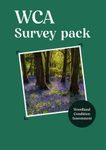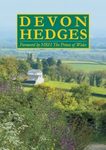By: Singarayer Florentine(Editor), Paul Gibson-Roy(Editor), Kingsley Wayne Dixon(Editor), Linda Broadhurst(Editor)
601 pages, 168 colour & 15 b/w illustrations
![Ecological Restoration Ecological Restoration]()
Click to have a closer look
About this book
Contents
Customer reviews
Biography
Related titles
About this book
Ecological restoration, although a relatively new endeavour compared to other disciplines, has gained significant momentum during the last decade as accelerating global change becomes more apparent. It is now widely accepted by the scientific community that to avoid further devastating effects of climate change and biodiversity loss, humanity must determinedly move more to protect and restore natural ecosystems. Many restoration efforts of the past have been ad hoc, site and situation-specific and have often failed to achieve desired outcomes, but over the last decade, many countries are allocating increasingly significant amounts of financial investment towards restoration with the goal of achieving more systematic and predictable outcomes. Today, activities related to restoring ecosystems, natural assets and biodiversity are a global focus.
This book covers a wide range of topics related to ecological restoration including for grasslands, wetlands, temperate and tropical forests and arid zones. Importantly, it also focuses on ecological restoration in human-disturbed landscapes such as for urban areas, farmlands, mine sites and transport corridors. It highlights the necessity for evidence-based approaches that are both nuanced and complementary with prescriptions for people-based restoration, that is socially inclusive and cognisant of historic and current community sentiment.
Ambitious landscape and continental scale targets for ecological restoration have been set across the globe. However, without practical guidelines developed from restoration evaluations from the recent past to follow, future efforts are unlikely to be successful, nor expected targets met. To that end, this book reviews and highlights a large number and variety of restoration stories from around the world. Most are presented as reader-friendly case studies, that feature innovative and systematic techniques for undertaking species-rich ecological restoration. Together they provide inspiration for current and future professionals and offer unique glimpses into state-of-the-art practice for this critically important discipline.
Contents
- Foreword
- Preface
- Introduction
- Grassy community restoration
- Restoration of abundance pasture lands in tropics
- Wetland or riparian restoration
- Mine site rehabilitation
- Farm-based restoration
- Roadside restoration
- Forest restoration
- Effects of restoration in rainforests, India
- Arid zone restoration
- Urban restoration
- Rare species restoration
- Assisted Recovery
- Importance of seed sources in future restoration programs
- Seed production area for landscape scale restoration efforts
- Restoration markets
- Broad scale restoration experiments
- Climate ready restoration
- Final synthesis
Customer Reviews
Biography
Professor Singarayer Florentine is a restoration and invasive species ecologist, with more than 25 years of experience in research and higher education teaching. He has been specialising in work on ecologically diverse habitats, and has had experience in three different countries. Florentine earned his PhD from Curtin University in Western Australia, and then moved to Queensland where he worked as Weed Scientist with the Tropical Weeds Research Centre. While he was School for Field Studies at the Centre for Rainforest Studies, Queensland, he was involved in several tropical rainforest restoration projects and began to conduct research into weed invasion in fragmented landscapes.
Dr Paul Gibson-Roy is a restoration ecologist specialising in grassland and grassy woodland communities. Paul has worked with various groups including universities, NGOs, governments and private businesses to increase the focus on the need to protect and restore these communities. His work has included detailed research and field scale implementation of practice. In addition, he has also been keenly involved in better understanding the dynamics and capacity of the broader seed and restoration sectors, in particular around seed production and seed supply chains, to provide effective restoration services. He has spent many years communicating findings from research and practice and advocating for better restoration policy, programs, and outcomes.
Professor Kingsley Dixon is a restoration ecologist and conservation biologist, with 40 years of global experience focused on landscape-scale restoration and conservation through community-led practices. He holds positions on international and national boards and commissions including President of the international Society for Ecological Restoration and member of the Task Force on Best Practices for the UN Decade on Ecosystem Restoration. Kingsley was awarded the Linnean Medal in 2013 for his significant contribution to the science of natural history
Dr Linda Broadhurst recently retired as Director of the Centre for Australian National Biodiversity Research, a joint venture between CSIRO National Research Collections Australia and the Director of National Parks. During Linda's research career her has research interests included conservation and restoration genetics and improving seed collection practices for better restoration outcomes. She also spent many years translating scientific findings to help improve on ground seed collection and use practices to ensure that plantings has a broad genetic base.
By: Singarayer Florentine(Editor), Paul Gibson-Roy(Editor), Kingsley Wayne Dixon(Editor), Linda Broadhurst(Editor)
601 pages, 168 colour & 15 b/w illustrations



































